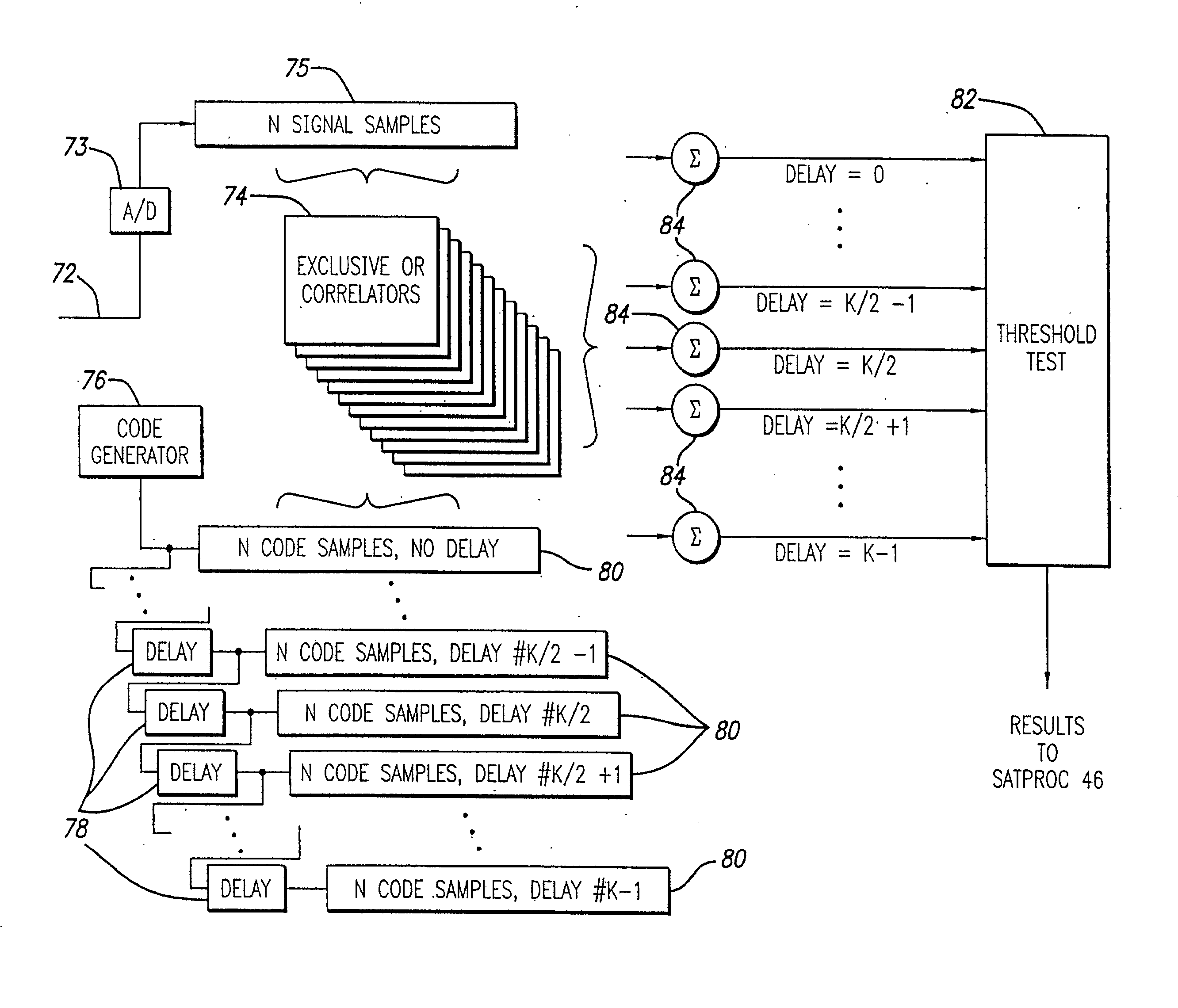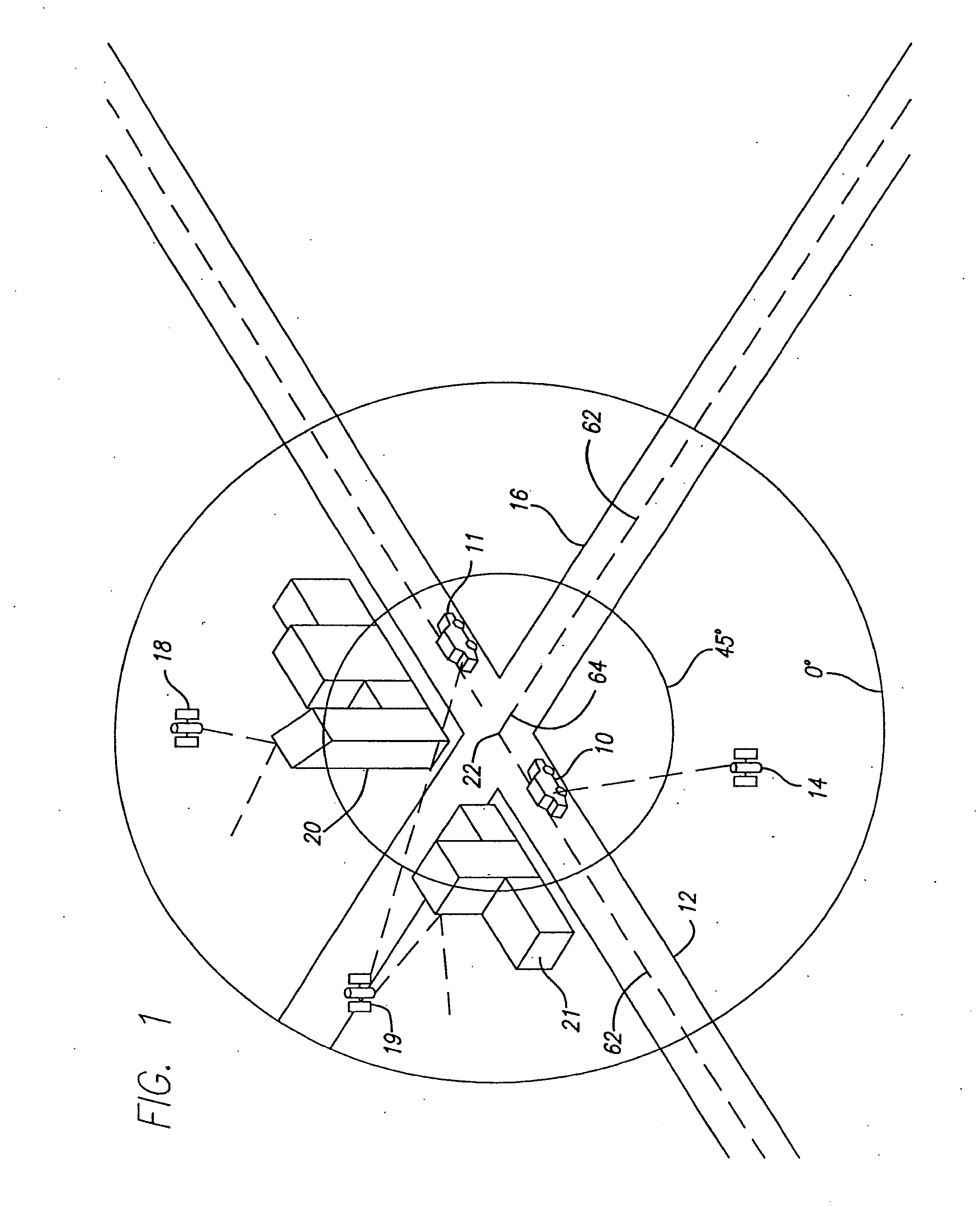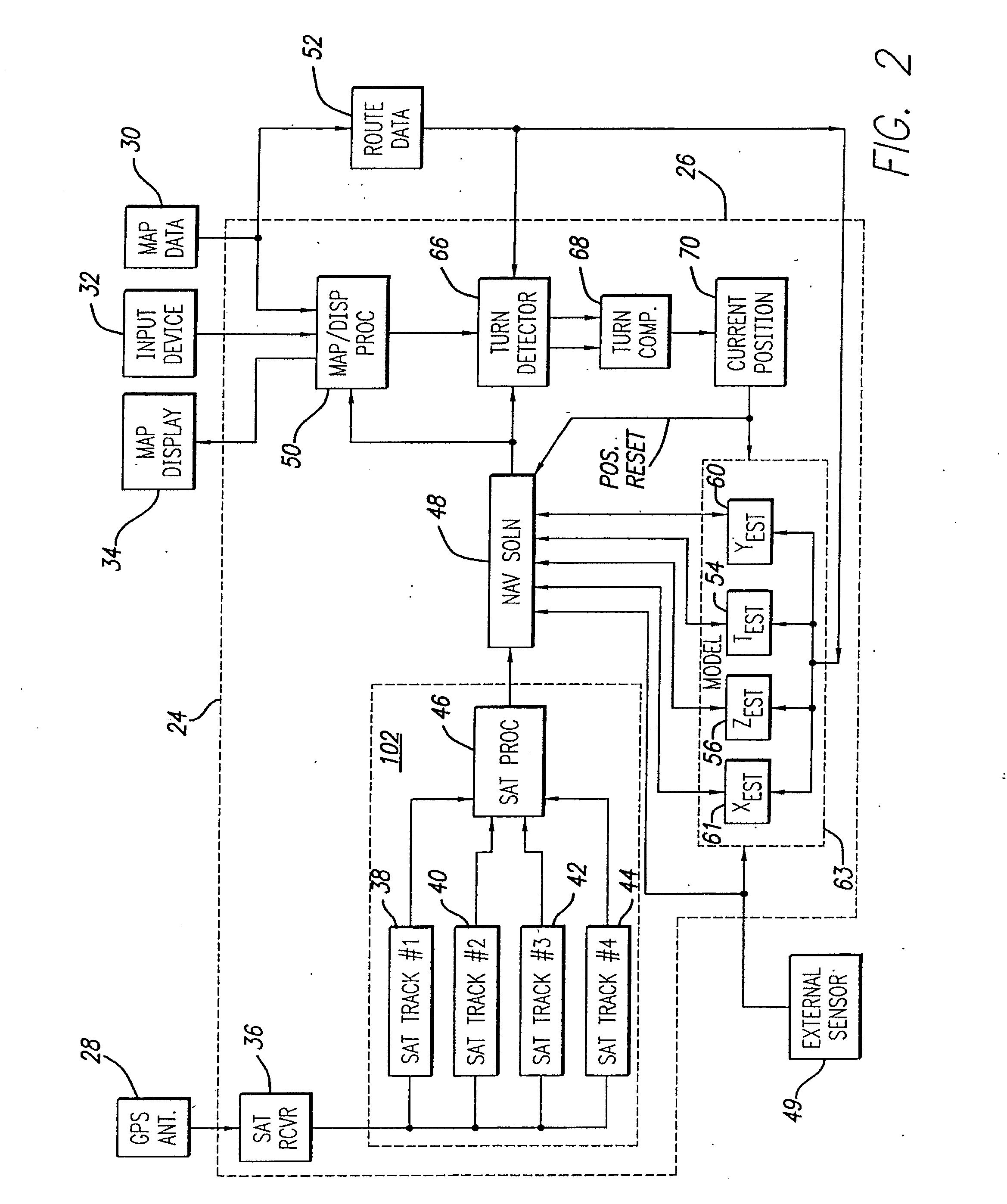Multipath Processing for GPS Receivers
a multi-path processing and receiver technology, applied in the field of spread spectrum receivers, can solve the problems of limited acceptance, difficult maintenance of continuous reception from 4 gps satellites, increased complexity and cost of such combined systems, etc., and achieve the effect of reducing the multi-path
- Summary
- Abstract
- Description
- Claims
- Application Information
AI Technical Summary
Benefits of technology
Problems solved by technology
Method used
Image
Examples
Embodiment Construction
)
[0047]FIG. 1 is an overview illustration of the operation of a GPS car navigation system according to the present invention. The GPS car navigation system, described below in greater detail with respect to FIG. 2, is mounted in car 10 which is moving along the center of roadway 12. NAVSTAR satellite 14, in the lower left quadrant of the figure, is in view of car 10. A simulated GPS circular overhead display, positioned approximately over intersection 22 of roadway 12 and roadway 16 indicates that satellite 14 is between 0° and 45° degrees of elevation above the horizon as viewed from car 10.
[0048]For the purposes of illustration, satellite 18 is positioned overhead between the elevation angles of 0° and 45° degrees. However, the line of sight between satellite 18 and car 10 is obscured by buildings 20 so that satellite 18 is not in view of car 10 at the position along roadway 12 as shown. Similarly, the line or sight between satellite 19 and car 10 is obscured by buildings 21. Howe...
PUM
 Login to View More
Login to View More Abstract
Description
Claims
Application Information
 Login to View More
Login to View More - R&D
- Intellectual Property
- Life Sciences
- Materials
- Tech Scout
- Unparalleled Data Quality
- Higher Quality Content
- 60% Fewer Hallucinations
Browse by: Latest US Patents, China's latest patents, Technical Efficacy Thesaurus, Application Domain, Technology Topic, Popular Technical Reports.
© 2025 PatSnap. All rights reserved.Legal|Privacy policy|Modern Slavery Act Transparency Statement|Sitemap|About US| Contact US: help@patsnap.com



